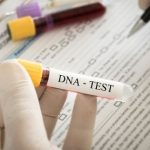NEW YORK — An Abyssinian cat from Missouri, named Cinnamon, has just made scientific history. Researchers have largely decoded her DNA, a step that may aid the search for treatments for both feline and human diseases.The report adds cats to the roughly two dozen mammals whose DNA has been unraveled, a list that includes dogs, chimps, rats, mice, cows and of course, people.Why add cats? They get more than 200 diseases that resemble human illnesses, and knowing the details of their genetic makeup should help in the search for vaccines and treatments, researchers say. The list includes a cat version of AIDS, SARS, diabetes, retinal disease and spina bifida, said Stephen J. O’Brien of the National Cancer Institute.
The new work is reported in the November issue of the journal Genome Research by a team including O’Brien and colleague Joan Pontius. It covers about two-thirds of the DNA of Cinnamon, a research cat that lives at the University of Missouri in Columbia; more complete results are expected next year, O’Brien said.
Richard Gibbs of the Baylor College of Medicine in Houston, who led a team that decoded the DNA of a monkey called the rhesus macaque, called the new work “a good outline” of cat DNA. Scientists are looking forward to the complete version, which will be useful for making detailed comparisons to the DNA of other animals, he said.
The full complement of an organism’s DNA is called its genome. In cats, as in people, it’s made up of nearly 3 billion building blocks. The sequence of those blocks spells out the hereditary information, just as strings of letters spell out sentences. Decoding a genome, which is called sequencing, means identifying the order of the building blocks.
The new work identified 20,285 genes in the cat, probably about 95% of the animal’s full complement, O’Brien said. That’s similar to the 20,000-25,000 genes estimated for humans.




